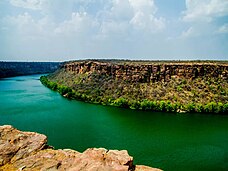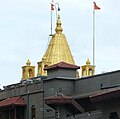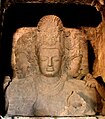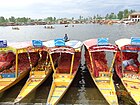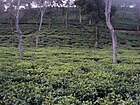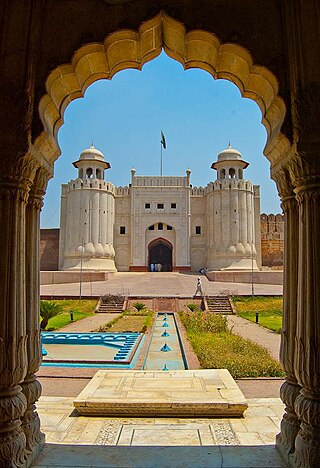This article needs to be updated. The reason given is: Update on COVID-19 and tourism industry.(July 2021) |
| Part of a series on the |
| Culture of India |
|---|
 |
Tourism in India is 4.6% of the country's gross domestic product (GDP). Unlike other sectors, tourism is not a priority sector for the Government of India. Forbes magazine ranked India as the 7th most beautiful country in 'The 50 Most Beautiful Countries In The World' rankings. [1] The World Travel and Tourism Council calculated that tourism generated ₹13.2 lakh crore (US$170 billion) or 5.8% of India's GDP and supported 32.1 million jobs in 2021. Even though, these numbers were lower than the pre-pandemic figures; the country's economy witnessed a significant growth in 2021 after the massive downturn during 2020. The sector is predicted to grow at an annual rate of 7.8% to ₹33.8 lakh crore (US$420 billion) by 2031 (7.2% of GDP). [2] India has established itself as the 5th largest global travel healthcare destination with an estimated market size of around $9 billion in 2019, out of the total global travel healthcare industry of $44.8 billion(2019). [3] [4] In 2014, 184,298 foreign patients travelled to India to seek medical treatment. [5]
Contents
- Visa policy of India
- e-Tourist Visa
- Statistics
- Domestic tourists
- Foreign tourist arrivals and foreign exchange earnings
- Foreign and domestic tourist visits by State
- World Heritage Sites
- Gallery
- Outline of tourism in India
- Tourist attractions
- Tourism in states
- See also
- References
- Further reading
- External links
According to the Ministry of Tourism, over 6.19 million and 1.52 million foreign tourists arrived in India in 2022 and 2021 respectively compared to 10.93 million in 2019, representing a -44% degrowth. [6] [7] India has bigger domestic tourist population so it's not dependent on foreign tourist much. This makes India the 22nd most visited nation in the world and 8th in Asia and Pacific. [8] Domestic tourist visits to all states and union territories numbered 1,036.35 million in 2012, an increase of 16.5% from 2011. [9] In 2012, National Geographic's Traveller magazine named the state Kerala as one of the "ten paradises of the world" and "50 must see destinations of a lifetime". [10] In 2014, Tamil Nadu, Maharashtra and Uttar Pradesh were the most popular states for tourists. [11] Delhi, Mumbai, Chennai, Agra and Jaipur were the five most visited cities of India by foreign tourists during the year 2015. As of 2017, worldwide, Delhi is ranked 28th by the number of foreign tourist arrivals, while Mumbai is ranked 30th, Chennai 43rd, Agra 45th, Jaipur 52nd and Kolkata 90th. [12]
The World Economic Forum's Travel and Tourism Development Index 2021, which replaced its previous Travel and Tourism Competitiveness Report, ranks India 54th out of 117 countries overall. [13] The last edition of the Travel and Tourism Competitiveness Report, published in 2019, had ranked India 34th out of 140 countries overall. The report ranked the price competitiveness of India's tourism sector 13th out of 140 countries. It mentioned that India has quite good air transport infrastructure (ranked 33rd), particularly given the country's stage of development, and reasonable ground and port infrastructure (ranked 28th). The country also scored high on natural resources (ranked 14th), and cultural resources and business travel (ranked 8th). [14] The World Tourism Organization reported that India's receipts from tourism during 2012 ranked 16th in the world, and 7th among Asian and Pacific countries. [15]
The Ministry of Tourism designs national policies for the development and promotion of tourism. In the process, the Ministry consults and collaborates with other stakeholders in the sector including various central ministries/agencies, state governments, union territories and private sector representatives. Concerted efforts are being made to promote niche tourism products such as rural, cruise, medical and eco-tourism. [16] The Ministry of Tourism maintains the Incredible India campaign focused on promoting tourism in India.













